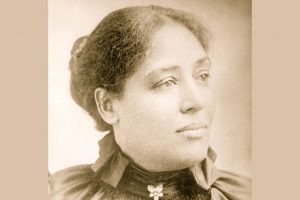“His ability to simplify the intricate rhythms of rumba, tango, and samba made him popular with American audiences.1”
My initial curiosity about violinists and fiddlers during the era of slavery led me to explore more about the violin’s role in different cultural contexts, including its place in Latin music, as documented in The Latino American Experience database. I wanted to learn more about its presence over the past few centuries. Below is an image of violinist Xavier Cugat, to whom the quote above is referencing, also known as the “Rumba King.”

The musician Xavier Cugat was born in Spain but lived in America for most of his life. He played classical violin from a young age and later became known as the “Rumba King,” a name closely identified with all Latin American music. His ability to simplify the intricate rhythms of the rumba, tango, and samba made him popular with American audiences, and by the 1940s he and his band had achieved a national reputation because of their radio appearances.
Playing an instrument can open doors, as we see in Cugat’s case, where his ability to simplify Latin rhythms allowed his career to flourish. This also exposed people to music that they might not have otherwise experienced. In contrast, those who simply appreciated Latin music but couldn’t create it may have been more limited in their engagement. Going back a bit, Eileen Southern (1997) writes about instrumentalists, particularly fiddlers, as entertainers during slavery, noting, “A good violinist found that his fiddle gained him entry into places otherwise closed to slaves and exempted him of many a day of hard work in the fields2.” While still enslaved, musicians like these gained temporary relief from field labor, performing in less physically demanding roles. Southern (1997) also notes that these musicians were expected to play minuets and cotillions, not just reels and jigs, reminding us that their performances were still dictated by the commands of the “masters.” Similarly, Cugat had to simplify Latin rhythms to meet the tastes of American audiences.
Below are two recordings of “Aquarela do Brasil” for comparison: one performed by a traditional big band with Cugat on violin, and another recorded in 1980 by Brazilian singer Gal Costa. The difference between these versions highlights what is meant by the “simplification” of Latin songs. Cugat’s arrangement has more “structured” rhythms, even subdivisions within a beat, that fit together in a way that is more familiar to American audiences.
Critics like Virgil Thomson often dismissed non-European influences in music. Thomson (1971) wrote, “And if their work bore traces of a non-European accent, these were no source of pride. Every effort was made indeed to perform German, French, or Italian music as it was performed in the country of its own origin 3.” Although his critique was aimed at what could be considered American music, it also suggests that many people might not have appreciated Latin American styles. As Cugat noted in a 1978 interview, this made it particularly challenging to bring the full complexity of Latin music to an unfamiliar audience4.
1 “Xavier Cugat.” In The American Mosaic: The Latino American Experience, ABC-CLIO, 2024. Image. Accessed October 1, 2024. https://latinoamerican2.abc-clio.com/Search/Display/2179761.</
2 Southern, Eileen. The Music of Black Americans: A History. Vol. 3. New York, NY: W. W. Norton & Company, 1997.
3 Thomson, Virgil. American music since 1910. New York, NY: Holt, Rinehart and Winston, 1971.
4 “Xavier Cugat – Composer Insights.” YouTube. Accessed October 1, 2024. https://www.youtube.com/watch?v=DR5Mys21CA8.


